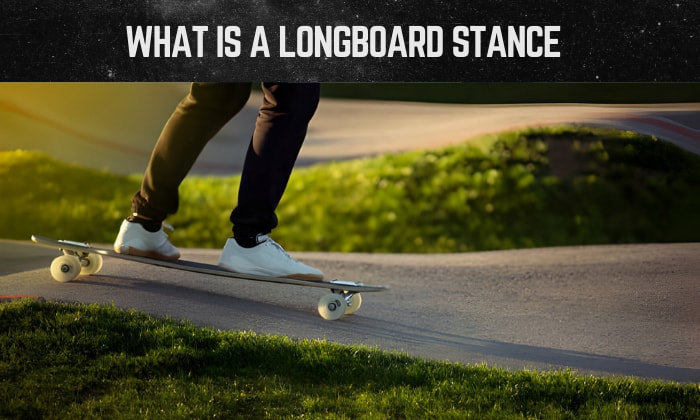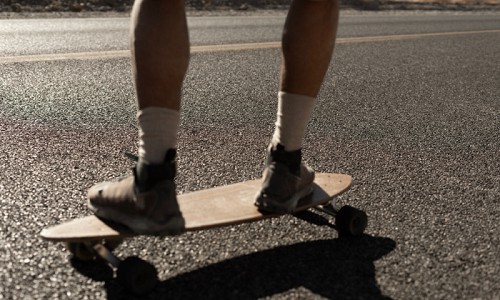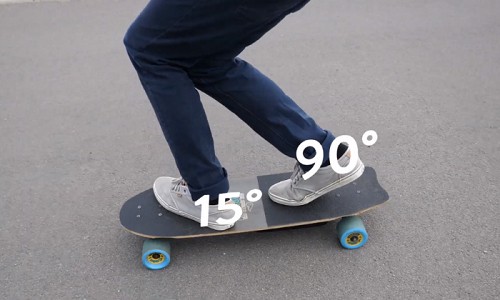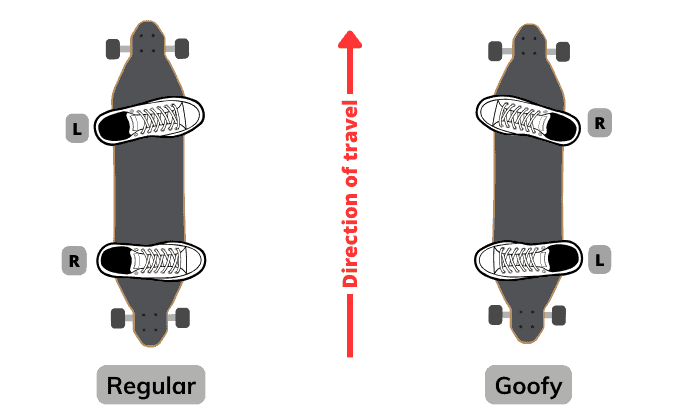Longboards are a great way to cruise, travel, exercise, or do something thrilling. They make going outdoors fun and exciting.
But like skateboards, to ride a longboard, we need proper orientation and training, from the stance down to the most complicated tricks. But what is a longboard stance, to begin with?
A longboard stance is different from that of a skateboard. Although both postures aim to stabilize the rider through correct foot and body positioning, the longboard stance entails adjustments, as its deck is larger than that of a skateboard.
Table of Contents
Understanding Longboard Stance
The longboard stance is comprehensive. It entails the skater’s foot position on the deck, body positioning, and weight distribution.
Above anything else, it’s more than how the rider looks when riding.
How you stand on a longboard affects how well you can perform a routine and ensure utmost safety and stability. Keep in mind that every longboarding mode has its own posture, which means we should learn about all of these before riding.
Components of a Longboard Stance
We have mentioned how weight distribution, foot placement, and other factors differ across various longboarding styles. Let’s explore a few of them through some of the most common longboarding styles and movements.
1. Foot Placement
The distance between both feet when cruising should be wider than the skater’s shoulder width. The front foot forms a 45-degree angle with the deck, while the back foot is on the tail.
When pushing, skaters lead with their front foot parallel to the deck, with the back foot pushing against the ground.
In carving, both feet should be perpendicular to the deck’s length.
2. Weight Distribution
When carving on a longboard, we shift our weight between the toes and heels. For speed skating, the weight rests more on the front leg.
3. Body Positioning
Perhaps, speed skating entails the most unique stance on a longboard surfboard. It requires the skater to tuck in, or bend the front knee at 90 degrees and place the back knee against the front calf. This style maximizes stability and reduces wind resistance.
In regular pushing and braking, you may also bend your knees to steady yourself, but less weight is put over your front truck, and your chest likely won’t touch your leg like in the tuck form.
Finding Your Perfect Longboard Stance
Before we dive into the ideal stance of cruising, pushing, or whatever longboard move, we should first learn the stance basics: the regular and goofy.
- The regular longboard stance finds the skater’s left foot on the deck’s front side.
- Contrarily, the goofy stance calls for the right foot at about 45° in the front of the deck.
- The back foot for either stance is often perpendicular to the deck’s length.
Although these are doable by any skater, whether for beginners or pros, at least one stance would be more comfortable. So, how do we know if we’re regular or goofy?
Simple. Stand on a flat ground. Ask someone to push you from behind. The first foot you set forward is your dominant or front foot. What stance you’re in then follows.
Another test is climbing up the stairs. The leg you naturally step forward first will be your back foot. So, leading with your right leg on the stairs means you are a regular-footed skater.
Nonetheless, there’s no harm in trying both stances. Our goal is to help you learn longboarding by finding the posture that’s most natural to you.
Conclusion
Standing on a longboard might look easy, but we can’t always ace the challenge unless we’ve had sufficient practice. And true enough, there are steps to follow to ensure balance, safety, and the completion of the routine.
So, what is a longboard stance? It’s a longboard posture with foot placement and weight distribution. Longboard stances might vary among different skating styles, but practice does wonders in helping you master them.
Finding your ideal longboarding stance is important, as it helps prepare you for skating and performing tricks.

Hi, I am Charles Harris. I opened this site to write as much as I can about my biggest passion – skateboarding!
I started as a clumsy yet passionate rookie 10 years ago to now a still passionate yet much better skateboarder! But I have to tell you, the whole journey has always been fun and rewarding, indeed not without hardship.





